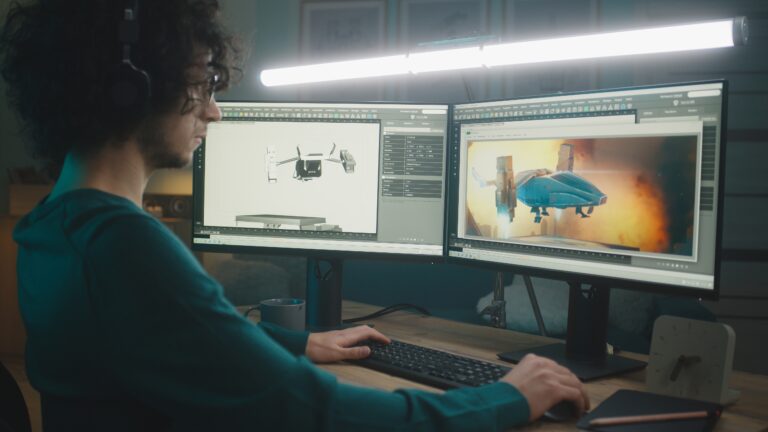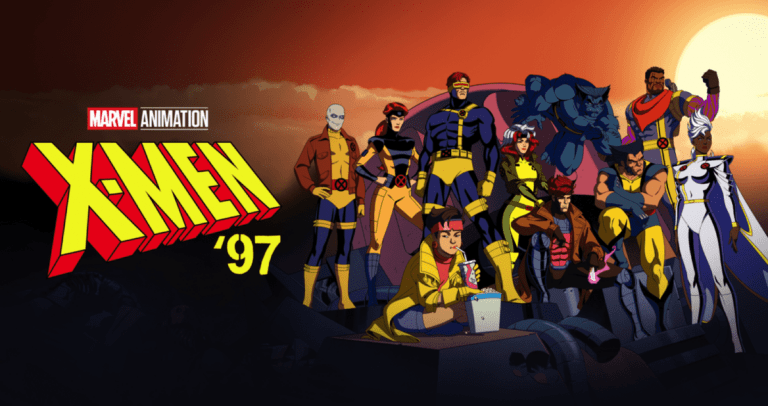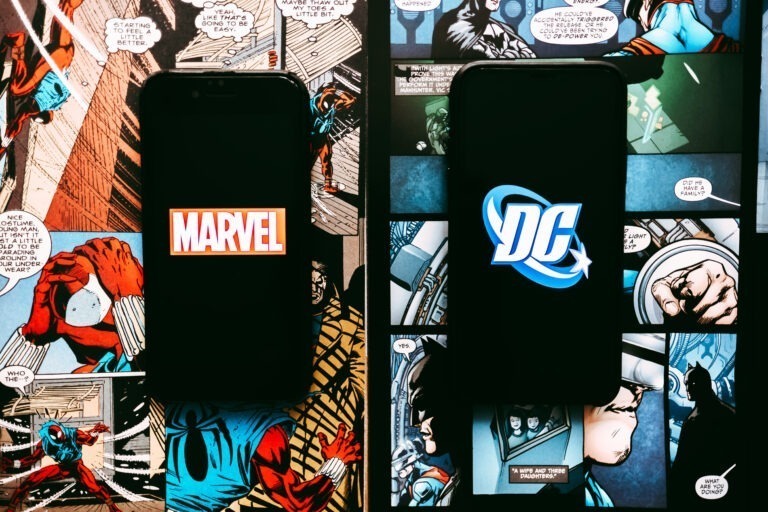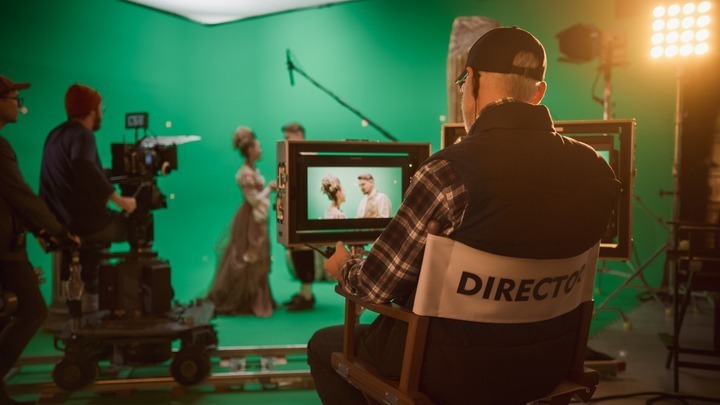Breaking the fourth wall – it’s the invisible barrier between performer and audience. French playwright Molière coined the term in the 1600s, and centuries later, the breaking the fourth wall meaning is central to film, TV, and video games. But what does breaking the fourth wall mean in voice over projects?
At Voice123 – where you’ll find versatile voice actors for AV projects – we understand the role of innovative film techniques in captivating audiences. So, here we’ll explore the breaking the fourth wall meaning, and breaking the fourth wall examples to guide your next audio or video project.
Your audience is in sight; it’s time to write your next story!
What does breaking the fourth wall mean?

Breaking the fourth wall refers to a creative technique where a character in a play, film, TV series, or video game breaks the illusion of their fictional world by interacting directly with the audience. The idea of breaking the fourth wall started in theater productions when actors performed on a stage with three physical walls to the back and sides. The fourth wall – which separated the actors from the audience – was invisible, so to break the 4th wall meant that actors would speak directly to the audience through monologues or narrative commentary. This technique blurs the line between the narrative and the real world, creating a unique connection with audiences and adding humor and depth to the storytelling.
Deadpool and Ferris Bueller’s Day Off are famous breaking the fourth wall examples. Deadpool (Wade Wilson) often converses with the audience, sharing his humorous perspective and struggles, changing the dynamic between actor and viewer. Ferris Bueller speaks directly to the camera, inviting the audience into his schemes in a playful atmosphere of mischief.
Here are some famous breaking the fourth wall examples in film, TV, and gaming.
Famous breaking the fourth wall examples
1. The Office
Characters Michael Scott (Steve Carell) and Jim Halpert (John Krasinski) break the 4th wall by acknowledging the camera. It creates a funny documentary-style effect, involving audiences in the absurdities and office politics inside the fictional company Dunder Mifflin.
2. Undertale
Flowey the Flower is a manipulative character who acknowledges players’ actions and decisions to affect game dynamics. This interaction blends the game world with the player’s reality, altering the game’s outcomes as players consider Flowey’s suggestions.
3. House of Cards
Amoral politician Frank Underwood’s monologues break the 4th wall by giving audiences insight into his Machiavellian schemes. While he appears to work for the greater good, audiences get to see who he really is during his rise to power.
4. Fight Club
Breaking the fourth wall in film challenges traditional storytelling. In Fight Club, the unnamed narrator’s interactions with Tyler Durden invite audiences to question their perception of split personalities as they realize the lead characters are actually the same person.
5. Super Smash Bros
Game characters occasionally acknowledge the player’s presence with taunts and victory poses. While the game has a playful, old-school style, this interaction reinforces the fun, self-aware nature of the Mario characters.
How to break the fourth wall in video projects
Breaking the fourth wall in video projects bridges the gap between real and fictional worlds. Here’s how filmmakers and video producers can break the 4th wall in their projects.

- Address the audience: Have your characters speak to the audience and share their thoughts or narrate parts of the story to create a personal connection with the viewers.
- Awareness of being filmed: Characters can comment on the production process, filmmaking equipment, or even interact with the crew to add humor or meta-commentary to the project.
- On-screen graphics or text: Insert text, graphics, or pop-ups in a comic-book style to comment on the story and add a dynamic layer to the project.
- Break boundaries: Allow characters to acknowledge the set, move or look beyond it, or even step off it entirely to disrupt the illusion of the fictional world visually.
- Interactive elements: Ask for audiences’ opinions, present choices, or reference viewer reactions to create a conversation between the video and the audience.
Strategies for breaking the fourth wall in audio projects
To break the fourth wall in audio projects, use sound effects, narration, and techniques like humor to connect with audiences and break the illusion. Here are 5 methods for breaking the fourth wall in audio projects.
- Narrator commentary: Use a narrator to comment on events or characters in a story to offer insight or comedic relief. Hire a voice actor from Voice123 with a soft, friendly tone to connect personally with audiences.
- Meta-narrative elements: Introduce plots or characters that exist outside the primary storyline. These characters who are aware of the “audience” can comment on the actions of the main narrative.
- Character monologue: Your character can break away from a scene to address the audience with their thoughts, feelings, or observations.
- Sound effects and music: These cues can signal shifts in perspective when breaking the 4th wall. They also indicate that a character is addressing the audience directly.
- Humor: Incorporate jokes, puns, or self-aware dialogue to acknowledge the illusion of the fictional world and create a humorous connection with viewers.
Final thoughts on breaking the fourth wall
Breaking the 4th wall shatters the barrier between fiction and reality with humor, sarcastic dialogue, and insightful commentary. Whether it’s directly addressing the audience in a film or acknowledging a player’s presence. Breaking the 4th wall allows writers, directors, actors, and voice actors to experiment by involving audiences in the story.
Need a dynamic element for your next project? Add the expertise of professional voice actors on Voice123. Or let our Managed Services handle your entire project for you.
From stage to screen, it’s time to break through the unseen!
FAQs
It’s when a character in a film, television show, play, or book acknowledges the audience. This can involve speaking directly to the audience, acknowledging that they’re part of a fictional work, or interacting with them in their world.
It can create a unique connection between the character and the audience, adding humor, depth, or self-awareness. However, it can also disrupt the narrative flow momentarily by inviting the audience to interact directly with the characters.
It’s when a character in a TV show or film acknowledges that they are in a production setting and not within the world of the story. This is often used for comedic effect.
This is a less defined and more experimental concept that refers to works going beyond audience acknowledgment and involving them in the creation process. It blends media or realities, further extending the idea of breaking the fourth wall.












